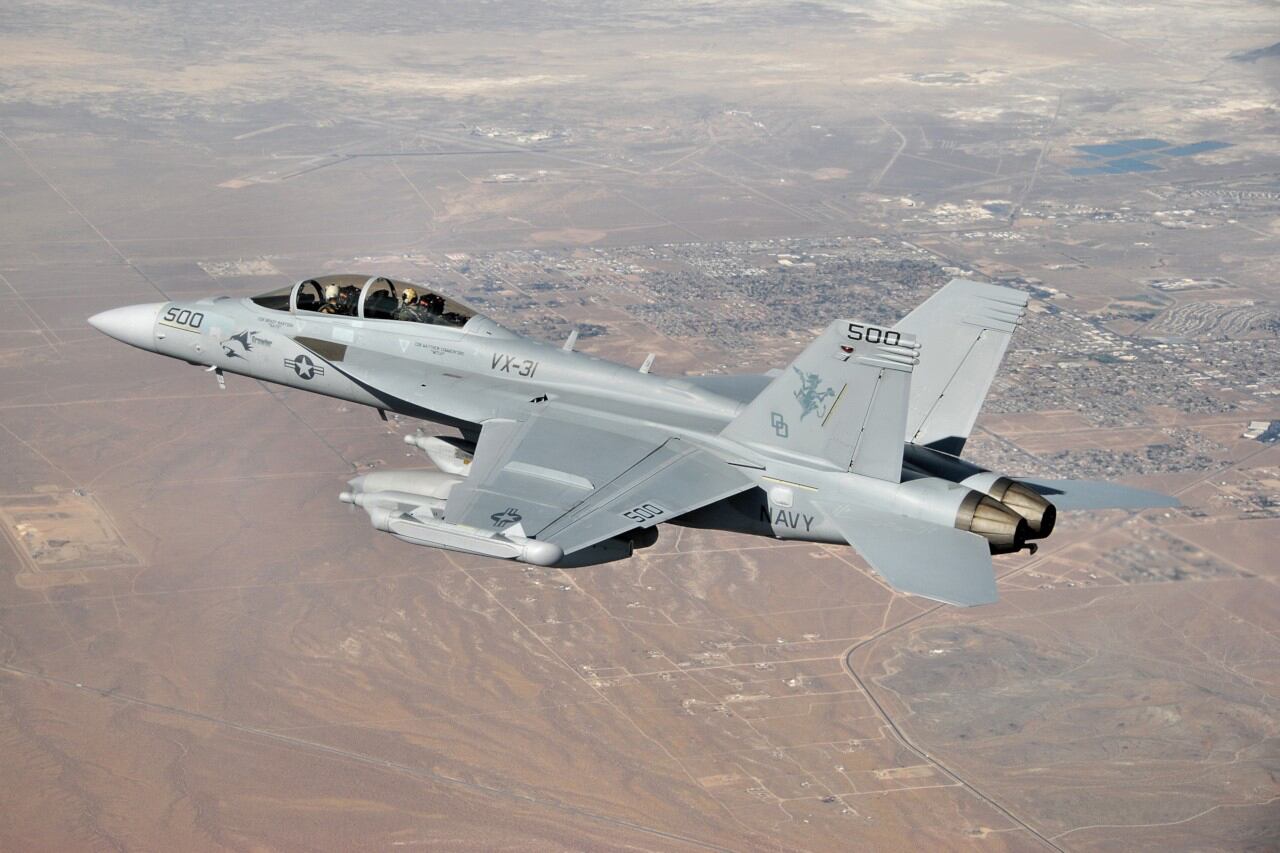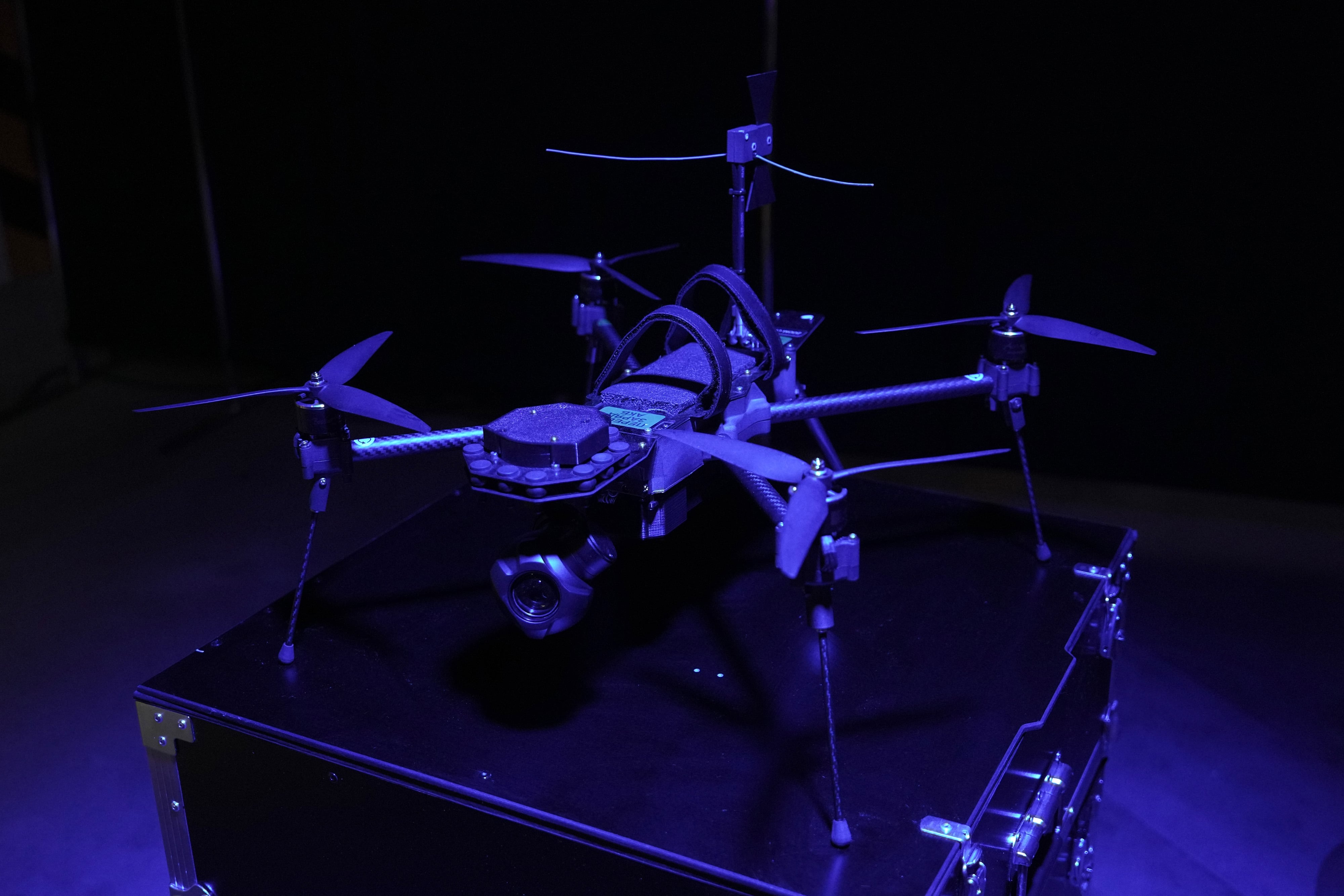For years, officials have touted the Navy’s Next Generation Jammer as the joint force’s premier standoff electronic attack platform, one at least 10 times more powerful than the legacy one. Part of what will make these three pods — covering the mid, low and high range of the electromagnetic spectrum — so much more effective than the legacy ALQ-99 pod is the sheer power, range and tasking ability.
RELATED

The 50-year-old analog ALQ-99 jammer can only be upgraded so much. The new, digitized jammer program will be able to “do things that the previous jammer couldn’t even think about,” Ernest “Bert” Winston, senior manager of strategy and business development for Raytheon Space and Airborne Systems, told C4ISRNET at the Association of Old Crows International Symposium in Washington in late October.
Raytheon was awarded the contract for the Next Generation Jammer’s mid band in 2016, while the Navy awarded Northrop Grumman and L3 a technology demonstration contract for low band. Last year’s budget documents do provide funding for high band.
As a standoff jammer, an EA-18 Growler equipped with a Next Generation Jammer will deny enemy assets the ability to identify and target friendly assets within the electromagnetic spectrum, allowing them to penetrate enemy airspace. It does this by jamming radars within certain frequencies, but modern radars and threat are more dynamic than in years past, necessitating the new three-band approach.
“It is extremely powerful because it has to be, because the standoff ranges,” Winston said.
Adversaries are looking to push out the range of enemies through more advanced radars and electronic sensing capabilities, called anti-access/area denial, so U.S. forces will have jam and confuse these systems farther away, allowing other strike platforms to penetrate. This necessitates a need for more capability, and more reserves.
“We have additional power now in the pod ... which allows you to make more jamming assignments, but also to be farther away, which can buy you more opportunities,” Tim Murphy, manager, naval aviation campaigns at Northrop Grumman, told C4ISRNET at the same conference.
Both Winston and Murphy said the pods being developed will have to have self-contained power supplied given the capacity they’ll need to generate, which will be too much power to be generated from the airplane, Murphy said. Winston noted this will also help facilitate the speed that the Next Generation Jammer will be able to switch between frequencies to keep up with targets that are incredibly fast.
“When it’s jamming between two different radars and switching beams, it can do it faster than the radars’ look through cycle,” he said. “The previous jammer when jamming between frequencies would take forever to go — forever in a digital sense — from the first frequency from the next. NGJ can do it almost instantaneously.”
The legacy jammer was good at talking to one target, but was much slower when talking to two. The new jammer can talk to two or more targets at the same time, unbeknownst to them, Winston said.
The pods will also be designed with integration and modularity in mind. Given there is a phased approach for integrating the three pods to the force, they will have to continue to work with the legacy equipment to some degree. Moreover, depending on the mission and available space on the airframe, it should be easy for maintainers to be able to take one pod off an aircraft and add it to another based on the types of targets for the mission, Murphy said.
“It’s got to be seamless for the squadrons, for the maintainer to be able to load them, but also seamless with the air crew to make their jamming assignments inside the airplane — to be able to go whether one type of pod is on the airplane; it shouldn’t be a challenge to them to tie up their time,” he said. “You want to be able to give that autonomy to the tactical situation, what the squadron decides to do for that specific mission.”
This increased capacity and modularity helps with force optimization, Winston said, as a single Growler can do more on mission, potentially freeing up others to perform missions elsewhere.
“There’s only so many of them on a flight deck to go, and flight deck cycles determine how many aircraft you can launch at a time,” he said. “Being able to put up a jammer in the air that can hit so many more targets at the same time gives the strike group and the air wing and the Growler squadron so many more options for how they want to use their Growlers because now, instead of launching all three for a strike, maybe I only need one on that strike and I have one over here doing something else.”
Banding together
Progress on the various components of the Next Generation Jammer is moving along. Raytheon announced in late October that it completed the first-power generation flight test of the mid-band pod mounted to an airborne asset, though not a Growler itself.
The test is a “huge milestone,” according to Winston, because, until this point, it had all been lab tests.
“The great thing about an airborne test is all the unknowns that happen while you’re flying, and we’re able to open the doors, generate power,” he said.
First to second quarter 2020 is when the first Growler flight test is expected, with an IOC date of third quarter 2022.
It is still unclear, however, what squadrons will get the mid-band pod as there are a lot of variables between now and 2022, Winston said, noting that decision is ultimately up to the Navy.
Raytheon has also delivered a few pods to the Navy so they can conduct their own tests. The Navy has also fit-tested them to Growlers.
L3 and Northrop Grumman — whose team consists of Harris and Comtech PST — were selected to separately demonstrate solutions for the low band to help the Navy refine requirements for the final program and reduce risk. Each were awarded a 20-month contract in October 2018.
L3Harris declined to speak about the ongoing work with the demonstration of existing technologies. The Navy awarded the contracts prior to the merger between the two companies, with officials noting there have been internal firewalls established between the two teams.
Murphy said the demonstration will go until the spring. The formal request for proposals for the low-band pod went out at the end of September, he said with proposals due in January and an award expected at the end of the summer 2020.
The proposal is an open competition, though the demonstration looked at “a couple of representatives from industry to show the government that they’re mature enough to be able to enter the low band program at milestone B, which is a change,” Murphy said. “This is really a way of accelerating the delivery … by jumping in at milestone B so you bypass that first 18 months.”
So far, tests have only occurred on the ground for low band. There have not been any airborne tests yet, though Murphy said technologies being used by Northrop for low band are flying with other customers.
The rough IOC date for low band is 2025.
Mark Pomerleau is a reporter for C4ISRNET, covering information warfare and cyberspace.








